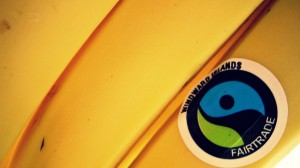
The last time Dr Matthew Piccaver wrote for Jump! Mag, it was on the topic of poo, and today he’s going to tell you a bit about the part of your body that you might just have wrinkled in disgust… the nose! Find out how noses work but don’t get too comfortable, because it snot over yet …
It’s been some time since my last article. Sorry. I’ve been very busy doctorin’ and stuff. So this article is on something that’s been causing a lot of problems to my patients just lately. That’s the nose.
Beak, horn, muzzle, proboscis, sneezer, sniffer, snout, whiffer, snuffer, or schnoz, call it what you will, the nose does a lot more than just make bogies and snot.
So let’s take a guided tour through the snotter.
Nostrils are the holes in the front of your face. They go straight back, and not up as you’d think. They’re separated by a wall called the nasal septum. Lining the nose are bumpy bits called conchae or turbinates, and there are three of those. These mix up the air a little bit, make the flow of air turbulent, which means bumpy. This shakes the air up, and makes anything trapped in the air, like dust, or pollen, bump into the side walls of the nose and stick to the surface. The lining of the nose is called mucousa, which makes snot.
 Snot, or nasal mucus, is brilliant. It’s full of good things that protect us from infection, and it’s sticky so it traps nasty things like dust and pollens. When it gets hard you can pick it out and flick it, but I wouldn’t recommend that. When the body doesn’t like something being breathed in, we make more snot. Which is why we get a runny nose from hayfever. It is a bit more complex than that, but that will do for now.
Snot, or nasal mucus, is brilliant. It’s full of good things that protect us from infection, and it’s sticky so it traps nasty things like dust and pollens. When it gets hard you can pick it out and flick it, but I wouldn’t recommend that. When the body doesn’t like something being breathed in, we make more snot. Which is why we get a runny nose from hayfever. It is a bit more complex than that, but that will do for now.
At the top of the nose is where the smell is detected. So when we fart, the chemicals whizz through the air, into our noses, and activate the olfactory nerve endings in the top of our nose, and our brain works out the rest. Most of our sense of taste is made up of smell, so it’s very important.
After that, the air we breathe in turns a corner and goes down into our lungs.
So you see the nose is very important. So next time you blow your nose, think of that’s going on inside it.
Dr Matt Piccaver is a General Practitioner (Family Practitioner) based in Suffolk, UK. Originally trained in Forensic Science, he went on to read Medicine at Cambridge. Dr Piccaver is a passionate advocate for patient education, and believes that no one has the monopoly on knowledge. After all, doctore means “teacher”.
He holds the Diploma from the Royal College of Obstetricians and Gynaecologists, and is a Member of the Royal College of General Practitioners.
Have you ever thought about the noise you make when you sneeze? Did you know that deaf people don’t make the atchoo noise, or that people in other countries don’t say atchoo?
An online magazine for the deaf community, Limping Chicken, recently ran an item on how deaf and hearing people sneeze differently.
The article by partially deaf journalist Charlie Swinbourne got readers talking – and the cogs started turning at Ouch too.
Swinbourne observes that deaf people don’t make the “achoo!” sound when they sneeze, while hearing people seem to do it all the time – in fact, he put it in his humorous list, The Top 10 Annoying Habits of Hearing People.
Nor is “achoo” universal – it’s what English-speaking sneezers say. The French sneeze “atchoum”. In Japan, it’s “hakashun” and in the Philippines, they say “ha-ching”.
Read more about the sound of sneezing here. If you speak another language, what do you say when you sneeze?



